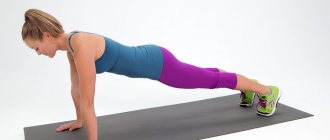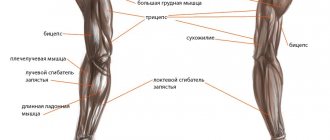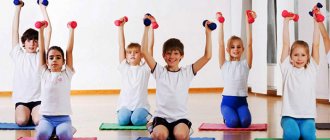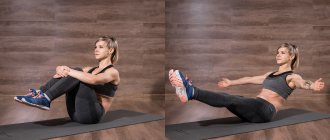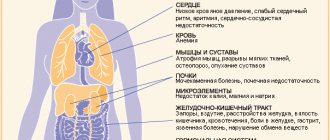Rhythmic gymnastics is one of the most popular sports for girls. And this is not surprising; young gymnasts are delighted with the bright costumes, communication with their peers and their first small victories. For parents, in turn, it is important that their girls grow up graceful, strong and successful. Gymnastics is the ideal sport to achieve these goals. It includes dance elements, acrobatic sketches and good psychological preparation. Thanks to this, gymnasts from a young age have grace, plasticity, flexibility, a sense of rhythm and psychological stability.
It is important for parents that their girls grow up graceful, strong and successful.
Parents should know that behind the external gloss of this romantic sport there can be a hidden world: first defeats and disappointments, hard work and even injuries to your child. You should also correlate your desires with your financial capabilities; gymnastics is not a cheap sport. Sewing bright suits, purchasing the necessary equipment and shoes will fall on the shoulders of the parents.
Having assessed the pros and cons of the sport, as well as the potential and desire of you and your child, you must definitely send your girl to learn rhythmic gymnastics.
Rhythmic gymnastics exercises: why should adults do them?
First of all, it's beautiful. Secondly, it is very useful. “Rhythmic gymnastics classes help develop flexibility, plasticity, and coordination,” comments Kristina Radikevich , master of sports in rhythmic gymnastics;
champion of Russia, multiple champion of Moscow and international tournaments and expert of the company “Gracia&Sport”. “They also improve posture and foot health, which has a positive impact on overall physical health.” Therefore, even if you don’t fancy yourself the new Alina Kabaeva, it’s still worth a try - at least to improve your well-being, posture and figure.
Start of rhythmic gymnastics classes
At what age can you start training?
At what age you start doing gymnastics depends on your goals. You can start classes for yourself, that is, to maintain slimness, develop flexibility and plasticity at any age. However, it must be remembered that there is a strict age limit for serious gymnastics.
You should come to training for the first time at the age of 3 years. At this age, bring your child to the rhythmic gymnastics room for one hour a week. This is necessary so that the baby gets used to the environment. At 4 years old, a child can be brought to classes 2-3 times a week, but to overcome psychological discomfort, parents must be close to the sports school at this time.
The official enrollment of young athletes in the rhythmic gymnastics section begins at the age of five. At this age, qualified coaches can conduct a brutal selection, after which only those children who are well developed both physically and psychologically remain in the sport.
Parents should be prepared to spend a lot of time on training. By the age of 12-14, a gymnast will spend 5 hours every day in the gym. Therefore, from childhood, a child should be prepared for the fact that sport requires certain efforts, without which it is impossible to achieve success.
How to get your child interested in rhythmic gymnastics
Children and sports are inextricably linked, however, when a child starts playing sports, he experiences psychological and physical shock, this is normal. Sooner or later, a young athlete will encounter difficulties and will not want to go to class.
When a child starts playing sports, he experiences psychological and physical shock, this is normal.
Often parents think that children do not understand anything due to their age and that they can simply force them to go to gymnastics. However, remember that children mature psychologically very early in sports, so try to explain to your child the benefits of playing sports:
- Future prospects
- You can get a profession early
- The figure of a girl gymnast is slim and fit
- Internal psychological core
If the child is too young for serious conversations about the future and interest in prospects, try not to force him, but to distract him:
- Buying a beautiful uniform for classes
- Makeup and hair workout
- Training in a swimsuit for performances
- Purchase of equipment and accessories (jump rope, ball, etc.)
The most important thing is to distract the child before the first performance. If the result is successful, then he will have an incentive to study for a long time. If the first time is not successful, do not scold the athlete, but praise him for the elements that worked out. In both cases, it is necessary to devote a little time to mistakes so that the little athlete improves his result next time.
Never compare your child with others, and under no circumstances say in front of him that there is little chance at competitions, because there will be very strong competitors. By doing this, you are dooming your young athlete to low self-esteem. If you think that the child is still too young and does not understand anything, you are deeply mistaken. At a young age, children absorb any information like a sponge.
How do rhythmic gymnastics training work?
Gymnastics lessons for adults are generally similar to what is done in classes in children's groups. “The training includes elements of fitness, stretching, and dancing,” explains Kristina Radikevich. “For example, at each lesson, special exercises are performed to develop flexibility and stretching, to set and correct posture, feet, to strengthen the abs, leg and back muscles. The training also includes mastering elements with a ball, mace, ribbon, jumps, turns, and acrobatic movements.”
If you have never done rhythmic gymnastics before, and in general you are not very familiar with sports, you should first master all these exercises with a trainer in the gym. But you can try to hone some basic elements, such as stretching and foot exercises, at home. This will help you understand whether you like this kind of training. In addition, even these simple exercises will be enough to improve stretching, relax the back muscles, and develop flexibility.
We asked Kristina Radikevich to compose and show us a set of rhythmic gymnastics exercises for adults.
Basic exercises
Gymnastics basic exercises will help you learn rhythmic gymnastics at home; they include general physical fitness, so performing these elements by beginners will not require special skills. They should be performed physically separately. When your muscles get stronger and your body gets used to the stress, you should move on to more complex elements.
Lunges
Beginners should perform the exercise while leaning on a chair. We perform 15 repetitions with the left and right legs. The angle of the front leg should be obtuse, the knee should not go beyond the heel. The knee of the supporting leg is lowered to the floor. The exercise uses the muscles of the abs, thighs and buttocks.
Tilts
Performed with support on the wall. We place our feet shoulder-width apart, hand reaching to the knee. We perform 10-15 repetitions. We perform the exercise exclusively on warmed muscles. The core muscles are involved.
Squats
You should spread your legs wide apart, making sure your toes point straight ahead. We transfer the body weight from the left leg to the right, perform 15 approaches. The exercise uses the inner thighs and buttocks.
Push ups
Beginners should start the exercise with emphasis on their knees. To obtain the desired effect, you need to keep your back straight and reach your chest to the floor. The exercise uses the muscles of the back, chest, abdomen and shoulders.
Knee Raise
We stretch our arms parallel to the floor, start walking, pull our knees towards our hands.
How to build a lesson
* Start your workout with a warm-up. 4-5 minutes of joint exercises will help warm up the ligaments. Then perform 100 jumping rope jumps: 50 by rotating the rope forward, 50 by rotating it backward.
* Do the exercises consistently.
* Don't chase speed: there are a lot of stretching exercises in the complex, they cannot be performed in jerks. “Try to relax and make an effort as you exhale,” Christina reminds.
* Focus on your feelings. Mild muscle discomfort is acceptable, but sharp pain is not. The first indicates that the muscles are gradually stretching, the second can signal an injury.
* Do this program 5-6 times a week. “Regularity is very important when it comes to developing flexibility: the more often you do the exercises, the faster you will achieve results,” says Kristina Radikevich.
To perform the exercises of the complex you will need a mat and a jump rope.
Ready to start class? Repeat after Christina.
Underwater rocks
Rhythmic gymnastics will have a coach. No wonder, every sport will have a coach. But if the mentor spends up to 30 hours a week with the child, then a lot depends on him. Building a relationship with a coach is quite easy, but there are circumstances when you may be unhappy with him - for example, in a group he will give preference to someone else. In gymnastics, the children of the coach’s acquaintances, the children of other coaches and the children of important (and rich) people practice, they will be in first place. You may be unhappy with the situation, but you must understand that if your child is not a “protégé”, then you can only come to the fore with triple the work, there are no other ways. The situation is similar with judging; it is not always objective, but having a serious advantage in an impeccably executed complex program, subjectivity can be overcome and a decent mark can be obtained.
There is no point in arguing with the coach - it will only harm the child, who spends dozens of hours a week with the student and can always get even, for example, by scolding him for exercises. After a damaged relationship, moving to another coach will be a difficult task, since a student in gymnastics is considered almost the property of the coach and the only way to leave him is to leave the sports school. And even if there is an opportunity to go to another coach at the same school, the teaching staff may be very friendly, and the training options will be the same or even worse.
One more point - rhythmic gymnastics, even for beginners, will require costs. Costumes, accessories, trips will cost money. But keep in mind that gymnastics is very difficult work. Not every adult works as hard throughout the day as young gymnasts work for several hours, constantly performing exercises. Therefore, your child does not need to skimp on extra beautiful accessories - let it be his salary. There is another side of the coin - a child who suffers in gymnastics begins to feel sorry for him at home. Thus, a hard worker in rhythmic gymnastics, even if he is a super-champion, becomes a slacker. If nothing is done, the problem may be noticed too late. There just aren’t enough classes in general education and sports schools for education, so let’s do homework - cleaning, washing dishes, at least a little, you can also plant a special garden for labor education.
Rhythmic gymnastics, due to its numerous complex exercises, leads to numerous injuries and chronic diseases. Therefore, if a child has pain in his joints, knees, ankles and a break in exercises did not give any improvement, consider switching to another sport, perhaps sports dancing, where gymnastic training will be useful, but there will not be such a load.
Bridge
Lie on your back, bend your knees and place your feet on the floor. Bend your arms at the elbows and place your palms with your fingers near your head. Working the muscles of your legs and arms, lift your pelvis and back off the floor. Straightening your legs and arms, lift your pelvis a little higher. If possible, try to step your hands closer to your feet. Lock in this position for 5-10 seconds, gradually increase the time you hold the “bridge”.
It’s okay if at first you don’t feel flexible enough; with time and regular practice, this quality will develop.
The editors would like to thank the Gracia&Sport company for their assistance in preparing the article.
Wave-type movements and techniques for their execution
How to learn wave-type movements
For wave-like exercises, on the contrary, smoothness and softness of execution are characteristic. Elements of the “wave” type with the hands or the whole body represent bending at certain points of the body, followed by straightening at other points so that the “wave” smoothly moves from one point of the body to another.
Wave-type movements with the arms are made from the position: arms to the sides. We bring the shoulder blades together, gradually move the shoulder to the elbow joint, then to the hand, then to the fingertips. When performing the exercise, some joints bend and others extend.
“Wave” type movements are performed with the whole body from the position: we stand on our toes, arms at the top. We start with the half-squat element, then gradually move our knees, hips, pelvis, and body forward, and finish the exercise by throwing our head back. At the same time, we lower our hands down, after which we move them to the sides and smoothly lift them up. To perform a “wave” in the opposite direction, you need to perform all movements in the opposite sequence from the last position of the body.
Kinds
There are three main groups of gymnastics. Each of them is also divided into types.
- Wellness. Its goal is to maintain physical fitness and improve the health of the child.
- Sports - development and improvement of physical qualities. It includes sports, rhythmic gymnastics and acrobatics.
- Applied - training of skills required in certain conditions. This is therapeutic - to improve the patient’s well-being. And professional - a set of exercises for firefighters, rescuers, pilots and astronauts.
Let's take a closer look at classes for girls.
Artistic
It is an Olympic discipline that includes acrobatic and dance movements:
- with ribbons;
- balls;
- clubs;
- jump ropes.
Musical accompaniment and bright shiny costumes add beauty and entertainment.
Rhythmic gymnastics for girls develops coordination of movements and the vestibular apparatus. In addition, the child develops a graceful and flexible feminine figure, beautiful posture and an ear for music.
Sports
Another Olympic sport. The competition includes compulsory and floor exercises on uneven bars and rings. A set of elements is performed on the crossbar and balance beam, as well as vaults.
The type of gymnast is short, jumping and flexible with a narrow pelvis.
Thanks to regular training, the young athlete receives:
- harmoniously developed body muscles;
- strengthened respiratory and cardiovascular systems;
- royal posture and graceful gait.
Acrobatics
This is an ideal sports section for girls who are distinguished by perseverance, perseverance and hard work.
Its special feature is the possibility of individual, pair and group performances.
The emphasis here is on physical strength, agility and balance.
The acrobat combines complex combinations - bridge, splits, stand-up, somersault, both on the floor and in support.
Such trainings provide:
- getting rid of fears, complexes and timidity;
- increasing the child's self-esteem;
- teamwork skills;
- release of excess energy.
In addition to sports, there is circus acrobatics - even more spectacular and vibrant.
Cheerleading
The combination of dancing and the above mentioned areas is cheerleading.
Currently, it is an independent and full-fledged sport with its own championships.
The performances are filled with complex acrobatic performances, pyramid building, and rhythmic dancing. In addition, there are individual competitions for captains and speech competitions.
Each team has its own uniform, designed in a certain color scheme. Mandatory additional accessories are pompoms.
How are classes conducted?
Many parents wonder how girls do gymnastics?
In the first year, young athletes are just getting used to the new regime. Trainings are held in a playful way with elements of general physical training.
Children have fairly elastic muscles. Therefore, the exercises are aimed at light stretching. An important place is given to correct breathing.
Young gymnasts learn to perform the simplest basic elements with mandatory musical accompaniment. This is how the little ones develop a sense of rhythm, the ability to perform the simplest connections and combinations in time with the melody.
In the second year, children begin to work on a more complex program.
Gymnastic exercises for girls include the following elements:
- warming up the muscles;
- foot stretching;
- rolling of the shoulder joints;
- transverse and longitudinal twines;
- bending forward from a sitting position;
- bridge from a supine position;
- boat.
The next part is learning gymnastic and dance movements, including bending, jumping, and flips.
Contraindications
Classes require good health, they are traumatic and have a number of contraindications.
These include:
- scoliosis;
- pathologies of the cervical spine;
- heart disease;
- myopia and myopia;
- epilepsy;
- problems in the musculoskeletal system;
- nervous system disorders;
- bronchial asthma;
- diabetes.
Before coming to the section, the child must undergo a medical examination and obtain a certificate from a pediatrician.
Benefit
This sports direction contributes to the harmonious and diverse development of the individual.
The gymnast has excellent posture, a beautiful figure, plastic, graceful movements. She acquires a unique ability to present herself.
Even without becoming an Olympic champion, a girl can continue her career in dancing or music. After all, in addition to working on the muscular corset, they learn to understand and love music, to feel the rhythm.
This physical education track teaches perseverance and perseverance. A strong-willed character is developed. Physical activity helps strengthen the body and improve immunity.
Increased loads contribute to the production of endorphin - the hormone of happiness.
Hand exercises
Plank . Starting position: emphasis lying on the floor, i.e. rest your straight arms and legs on the floor so that your body is parallel to the floor, your shoulders are directly above your palms, your back is slightly rounded, your legs are together. 2 sets of 20 seconds.
Plank on one arm (first on the right, then on the left). Starting position: lying down, press your straight arm to your thigh along the body, do not turn your shoulders, do not spread your legs. 2 sets of 20 seconds.
Swings and technique of their execution
Swings are sharp exercises that begin with a jerk and continue inertly, while the exercise can end actively or inactively. By lowering the limbs freely, we consider the ending to be active, and by fixing a part of the body in a specific position, we consider the ending to be inactive. Swings are performed with arms, legs or the whole body.
Arm swings are made from the starting position: arms are directed to the right or left. To perform the exercise correctly, you need to move your arms, swinging them downwards in the opposite direction . Swinging legs should be performed with a straight, tense leg. And the whole body swings are carried out due to sharp impulses in the knee joint or pelvis.
What it is
Ancient Greece is considered the birthplace of gymnastics.
Initially, it was a system of exercises aimed at developing strength, endurance, flexibility, dexterity and coordination of movements. The first Olympic Games consisted of just such competitions.
Currently, this is the most beautiful, aesthetic, graceful and popular sport for girls.
A fragile, flexible, graceful and, at the same time, strong gymnast in a bright leotard with her hair gathered in a bun at the back of her head, is the standard of beauty, femininity and tenderness.
Competitions
Competitions are a great holiday for athletes and a bright, interesting spectacle.
By nature they are divided into:
- personal, the result of each participant is counted;
- team, points are scored as a team;
- personal-team, points for individual and general performances are combined;
- competitions in group exercises, the result of the entire ensemble is credited to the team.
In addition, performances can be:
- classification, carried out in strict accordance with uniform rules;
- non-classification, conducted according to a special program;
- qualifying rounds that identify the members of the national team.
Athletes with special training and a doctor’s permission are allowed to participate.
Performances are conducted according to the assigned category, or one level higher or lower.
Demonstrative compositions must fit within a strictly allotted time and include a mandatory set of elements. The coherence of working with objects or equipment is assessed.
The performance is assessed on a 20-point system. Serious requirements are placed on the appearance of the competition participant. The combination of the color of the suit and items, hairstyle, and makeup are taken into account.
Grace and beauty are achieved through a strict sports regime, long training and dietary restrictions.
Exercises on the horizontal bar
Pull-ups on the bar with external assistance - i.e. the parent holds the child by the stomach and helps him pull himself up. Gradually reduce assistance. It is important that when doing pull-ups, the child maintains a straight body position, does not bend his legs and pulls himself up to the chin (i.e., the chin is higher than the bar). Perform: 2 sets of 10 times.
Emphasis on straight arms on a low crossbar - these can also be parallel bars. Starting position: standing on the crossbar with straight arms, shoulders slightly forward, back rounded, emphasis on hips, legs together. Perform 2 sets of 10-20 seconds.
Moving with your hands on a hanging bar - find any long, high bars, stairs (there are many of these on playgrounds) where the child can hang on his hands and move in different directions without the help of his legs.


